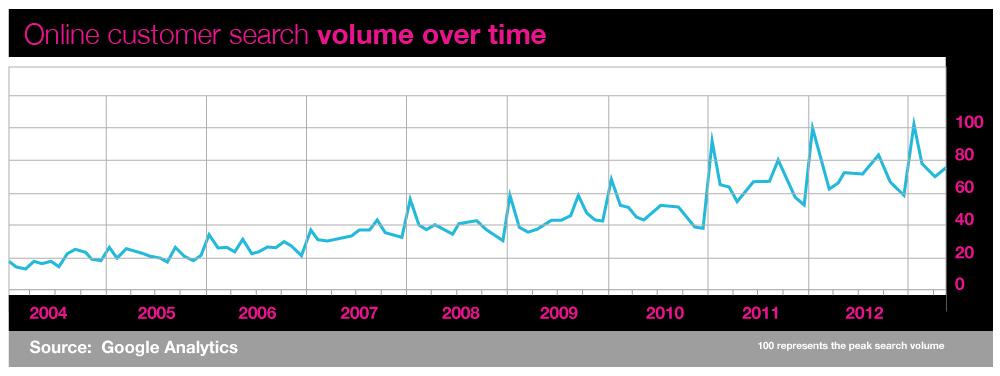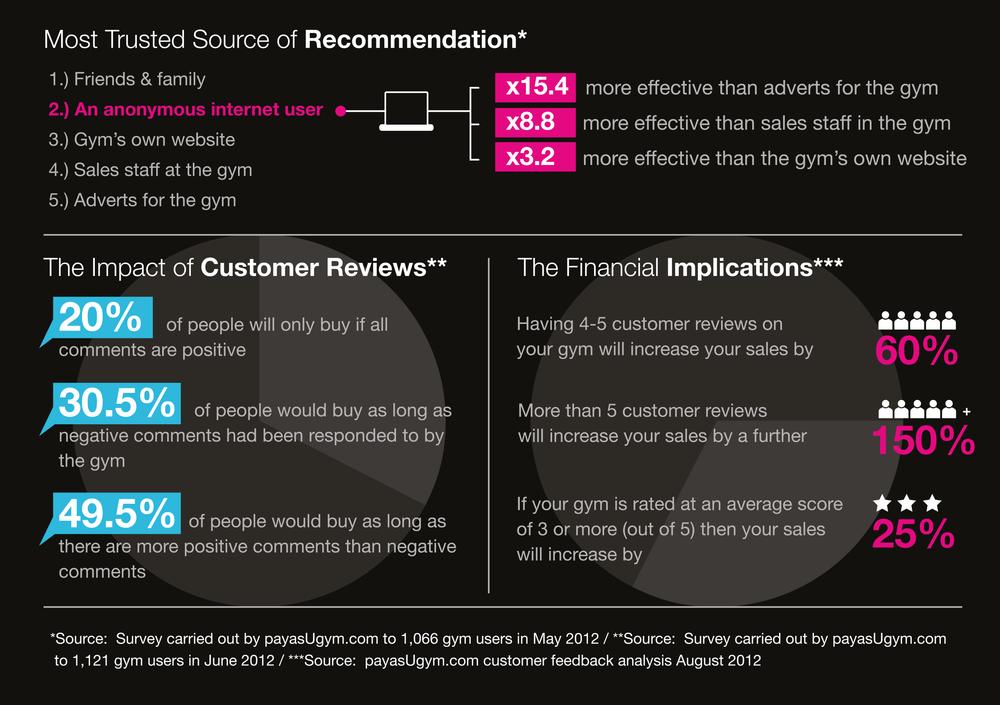Customers have fundamentally and irreversibly changed the way they buy, which means the health and fitness industry has to change the way it sells in order to stay relevant. Operators that respond to these changes have the potential to gain market share rapidly, while those that cling to outdated marketing methods will be left behind just as quickly.
WARNING SIGNS
When customer buying habits start to change, the warning signs are fairly easy to spot, even at an individual club level. As one sales channel becomes more effective, another will inevitably diminish, and this is reflected by an increase in customer acquisition costs. This measure is a simple calculation, dividing what you spend on attracting customers versus the number of actual members you sign up as a result.
As customers change the way they buy, they become less responsive to traditional marketing channels, making these less effective and therefore more expensive. Membership acquisition costs then start to increase as operators have to fight harder just to stand still.
THE GROWTH MARKET
Over the last two years, the volume of online searches for ‘gym membership’ and related search terms has increased by 64 per cent. At the time of writing, the indications are that January 2013 will have set a new record high for the industry, up a further 33 per cent compared to January 2012. While traditional seasonal data spikes can be seen in customer demand (Figure 1), the increasing pace of growth clearly demonstrates the potential of the online sales channel.
These impressive growth figures are partly down to the increased availability and affordability of devices which enable online search, such as smartphones (UK ownership is up 192 per cent in two years, according to Ofcom data) and tablets (UK ownership up 550 per cent in the last 12 months, reports PCPro). However, these statistics simply reflect the provision of hardware which facilitates the wider cultural and behavioural shift towards online buying.
The internet is attractive to customers as it provides the anonymity, information and independent consumer advice that empowers them to make a buying decision without the hard sell that many (rightly or wrongly) expect from the health and fitness industry. It’s therefore vital that operators take the time to understand these behavioural changes and ensure that their sales and marketing strategy really has the capability to influence the customer during their decision-making process.
VANITY DATA
While many clubs are effective at converting a customer into a member once on-site, too few pay enough attention to the other factors that may prevent a customer from visiting their club at all. As Figure 1 clearly demonstrates, an increasing number of customers prefer to do their homework online in advance. A 70 per cent conversion rate on-site is therefore just a vanity number if you are actually losing 90 per cent of your potential customers before they even visit the club.
In this context, a customer who is prepared to visit your club has probably already done their homework online, and they are likely to buy regardless of the sales process you have on-site – which does raise a question regarding the value of a sales resource in the future.
THE NEW DECISION PROCESS
So what is the decision-making process that an online customer goes through, and what can we do as an industry to more effectively influence it? In order to bring this to life, it’s often useful to visualise the steps you go through personally when preparing to purchase a similarly priced product (£400+) such as a holiday or a new TV.
Figure 2 demonstrates the three main phases that people go through when making a buying decision online. It is this process that operators need to understand and address if they want to influence the growing online market.
1. SEARCH ONLINE
When a customer goes online, their first impression of a club will not be the great local signage, the beautifully clean reception area or the high spec gym equipment. It will be whatever they can find online. While most operators put a lot of pride into the physical appearance of their club, this effort is wasted if customers are put off by something they see online.
The challenge for operators is therefore to make sure customers can actually find them online, and that what they find is appealing enough for them to want to see more.
Tips for helping to bring this about include:
* Make sure customers find your club online: A small investment in ‘cost per click’ advertising is a quick way to do this (see adwords.google.co.uk)
* Make sure your club appears in the same places as your competitors, so they don’t have an advantage. You can check search results such as ‘gyms near [your town]’ to see where they are promoting.
* Think about re-focusing some of your staff to maintain your online presence as well as keeping the physical club clean and tidy.
2. GET A RECOMMENDATION
Having found your club online, the customer then seeks out impartial advice to help them make the right decision. Word of mouth remains a powerful tool for an industry that relies heavily on referral, but this conversation has moved online. In this context, operators need to identify where their clubs are being talked about and know how to effectively participate in the conversation.
During the summer of 2012, payasUgym.com carried out a survey of gym users in order to understand whose advice they trust when considering a new gym – see Figure 3. As part of this analysis, we also studied the financial impact of online customer reviews in order to understand the revenue potential for operators.
The results show that anonymous internet users have a significant effect on your business through comments posted on internet forums, social media and review sites. We also found that online feedback is even more influential for women, and the effectiveness is enhanced as the price of the gym increases.
Many operators approach customer feedback with a degree of trepidation, but it’s interesting to note that nearly half of all customers would still buy from a club with negative feedback provided the management had responded to it. We also found that a club with average feedback can offset negative comments by providing more photographs of the actual facilities.
In addition, customers understand that no service can be perfect all of the time, and not all of them agree on ‘bad’ points. Where one person may complain that a swimming pool was full of children, another will interpret this as ‘good for families’.
To help secure a recommendation:
* Make sure your club is listed on review sites and forums that enable people to talk about gym use by searching Google for ‘gym reviews in [your town]’.
* Set up a Google alert so you receive an email from Google when people are talking about your club, and try to respond quickly and positively (google.co.uk/alerts)
3. LOOK FOR A DEAL
At this stage, the customer still hasn’t set foot in the club, but is now seriously considering it. Therefore the challenge is to provide just enough of an incentive to get them to follow up their interest with a site visit – without discounting unnecessarily.
The key to offering effective deals is to ensure that the online channels or websites through which you promote them specifically target the type of customer you are trying to attract with each deal. The promotion or discount you offer should also be no more than the bare minimum that will get them through the door.
It’s important to:
* Consider the relevance of the audience when you offer a promotion online to maximise conversion to full members.
* Try to avoid ‘daily deal’ or group buying sites that aren’t specific to the health and fitness industry. These sites offer diminishing returns and significantly devalue your product in the eyes of the customer.
CONCLUSIONS
Customers have fundamentally and irreversibly changed the way they buy, so fitness operators have to change the way they sell. This doesn’t mean traditional methods need to be abandoned, but it does mean clubs have to understand their customers’ decision-making process before tailoring their next ad campaign.

























































